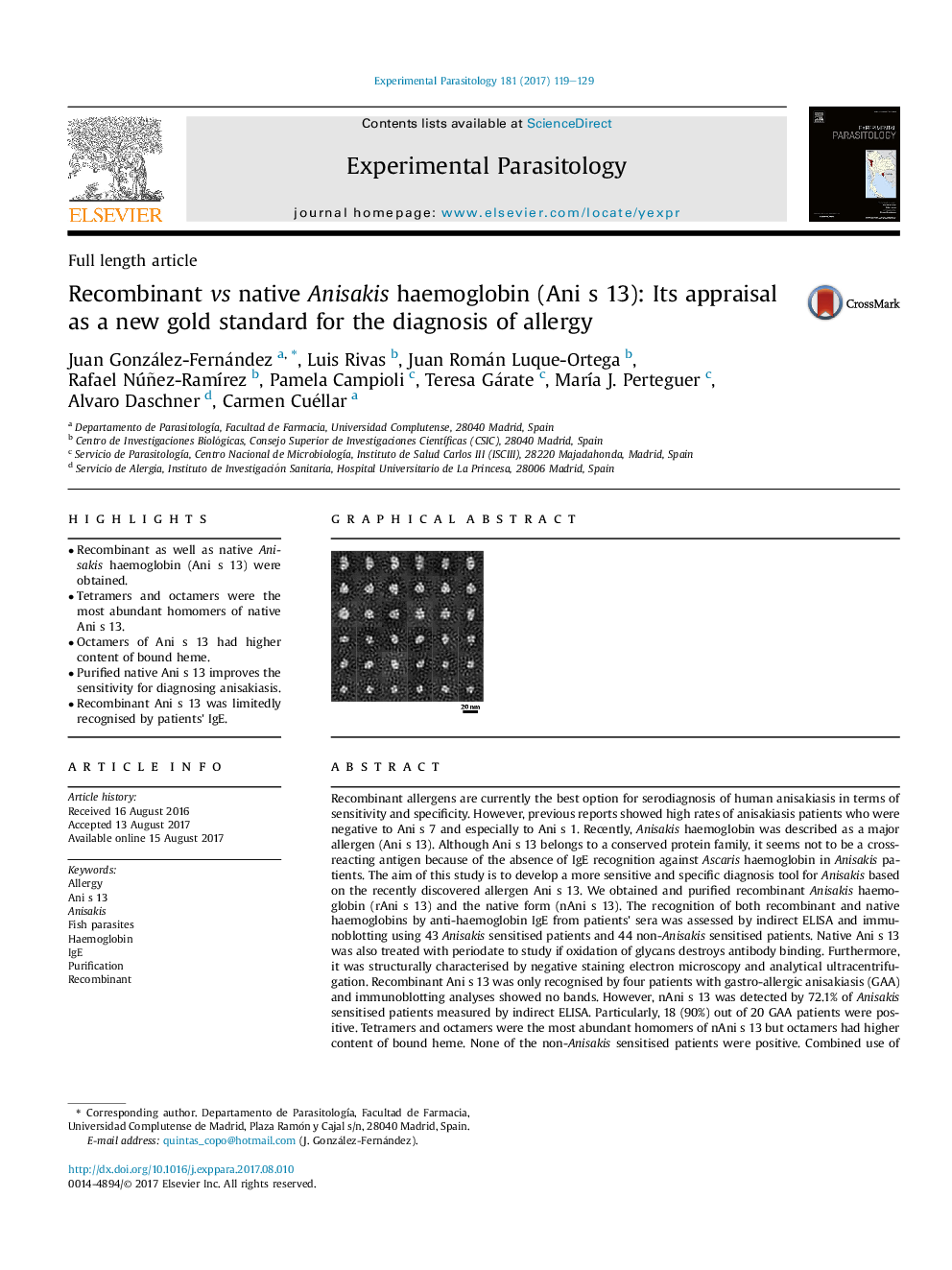| کد مقاله | کد نشریه | سال انتشار | مقاله انگلیسی | نسخه تمام متن |
|---|---|---|---|---|
| 5741036 | 1616984 | 2017 | 11 صفحه PDF | دانلود رایگان |

- Recombinant as well as native Anisakis haemoglobin (Ani s 13) were obtained.
- Tetramers and octamers were the most abundant homomers of native Ani s 13.
- Octamers of Ani s 13 had higher content of bound heme.
- Purified native Ani s 13 improves the sensitivity for diagnosing anisakiasis.
- Recombinant Ani s 13 was limitedly recognised by patients' IgE.
Recombinant allergens are currently the best option for serodiagnosis of human anisakiasis in terms of sensitivity and specificity. However, previous reports showed high rates of anisakiasis patients who were negative to Ani s 7 and especially to Ani s 1. Recently, Anisakis haemoglobin was described as a major allergen (Ani s 13). Although Ani s 13 belongs to a conserved protein family, it seems not to be a cross-reacting antigen because of the absence of IgE recognition against Ascaris haemoglobin in Anisakis patients. The aim of this study is to develop a more sensitive and specific diagnosis tool for Anisakis based on the recently discovered allergen Ani s 13. We obtained and purified recombinant Anisakis haemoglobin (rAni s 13) and the native form (nAni s 13). The recognition of both recombinant and native haemoglobins by anti-haemoglobin IgE from patients' sera was assessed by indirect ELISA and immunoblotting using 43 Anisakis sensitised patients and 44 non-Anisakis sensitised patients. Native Ani s 13 was also treated with periodate to study if oxidation of glycans destroys antibody binding. Furthermore, it was structurally characterised by negative staining electron microscopy and analytical ultracentrifugation. Recombinant Ani s 13 was only recognised by four patients with gastro-allergic anisakiasis (GAA) and immunoblotting analyses showed no bands. However, nAni s 13 was detected by 72.1% of Anisakis sensitised patients measured by indirect ELISA. Particularly, 18 (90%) out of 20 GAA patients were positive. Tetramers and octamers were the most abundant homomers of nAni s 13 but octamers had higher content of bound heme. None of the non-Anisakis sensitised patients were positive. Combined use of purified native form of Ani s 13 with current gold standards would improve the sensitivity and specificity for diagnosing anisakiasis.
244
Journal: Experimental Parasitology - Volume 181, October 2017, Pages 119-129